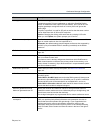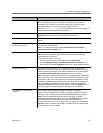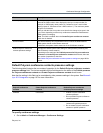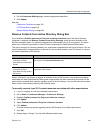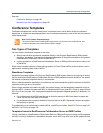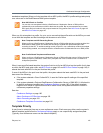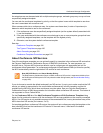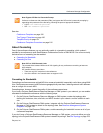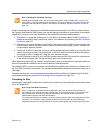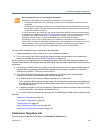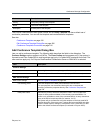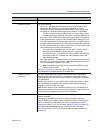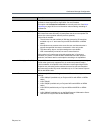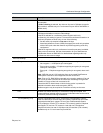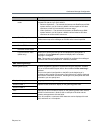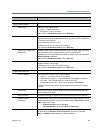
Conference Manager Configuration
Polycom, Inc. 194
Once a conference with cascading for bandwidth enabled has started (the “hub” MCU has been chosen),
the Polycom RealPresence DMA system uses the site topology information to route callers to the nearest
eligible MCU (using the pool order applicable to the conference) that has available capacity:
● If the caller is in a site that contains one or more MCUs, the system selects an MCU in that site (it
selects the same MCU that it would have chosen in the absence of cascading. See MCU Selection
Process on page 147.
● If the caller is in a site that doesn’t contain MCUs, the system looks for MCUs in sites that only have
a direct network path to the caller’s site (no path to the caller’s site through a cloud). It selects one,
using the same selection process.
● If there are no MCUs in sites that only have a direct network path to the caller’s site (no path to the
caller’s site through a cloud), the system looks for MCUs in sites that are connected to the caller’s
site through a cloud. It selects one, using the same selection process.
● If an MCU belongs to an MCU pool, the DMA system selects an MCU that meets the requirements
of the selection process from the highest priority pool within the pool order.
When determining which MCU is “nearest” and which path is best for a cascade link, the system takes into
account the bandwidth availability and bit-rate limitations of alternative paths.
If the selected MCU is new to the conference, the RealPresence DMA system creates the cascade link to
the “hub” MCU hosting the conference. The cascade link bandwidth matches the conference setting, up to
1920 kbps.
Cascaded conferences can have conference passcodes and can be Polycom Conferencing for Outlook
(calendared) conferences (see Microsoft Exchange Server Integration on page 175).
Cascading for Size
Cascading for size makes it possible for a conference to contain many more participants than there is room
for on any single MCU.
Note: Cascading for Bandwidth Topology
Cascading for bandwidth uses a hub-and-spoke configuration; each cascaded MCU is only one link
away from the “hub” MCU that hosts the conference. To host the conference, the system chooses the
same MCU that it would have chosen in the absence of cascading. See MCU Selection Process on
page 147.
Note: Large Cascaded Conferences
When a conference is cascaded across multiple MCUs, the video and audio from each MCU is
transmitted to every other MCU through cascade links. This incurs some delay. In a conference with
many cascade links, this delay may become noticeable to the participants and could limit the
effectiveness of two-way real-time communication.
The transmission delay isn’t noticeable in one-way communication or when all the speakers are on the
same MCU. For this reason, large cascaded conferences are best suited to presentation-style
conferences where only a few participants (on the same MCU) speak and everyone else only listens.



